![图像处理中的数学问题(第2版)(英文版) [Mathematical Problems In Image Processing:Partial Differential Equations and the Calculus of Variations]](https://pic.windowsfront.com/10104513/2d5b98ef-65cf-4574-ad7f-f2c23b9d545d.jpg)

具体描述
内容简介
Introduction、The Image Society、What Is a Digital Image、About Partial Differential Equations(PDEs)、Detailed Plan、Mathematical Preliminaries、How to Read This Chapter、The Direct Method in the Calculus of Vgriations、Topologies on Banach Spaces、Convexity and Lower Semicontinuity、Rclaxation、Aboutr-Convergence、The Space of Functions of Bounded Variation、Basic Definitions on Measures、Definition ofBV(Ω)、Properties ofBV(Ω)、Convex Functions of Measures、Viscosity Solutions in PDEs等等。内页插图
目录
ForewordPreface to the Second Edition
Preface to the First Edition
Guide to the Main Mathematical Concepts and
Their Application
Notation and Symbols
1 Introduction
1.1 The Image Society
1.2 What Is a Digital Image7
1.3 About Partial Differential Equations(PDEs)
1.4 Detailed Plan
2 Mathematical Preliminaries
How to Read This Chapter.
2.1 The Direct Method in the Calculus of Vgriations
2.1.1 Topologies on Banach Spaces
2.1.2 Convexity and Lower Semicontinuity
2.1.3 Rclaxat.ion
2.1.4 About r-Convergence
2.2 The Space of Functions of Bounded Variation
2.2.1 Basic Definitions on Measures
2.2.2 Definition ofBV(Ω)
2.2.3 Properties ofBV(Ω)
2.2.4 Convex Functions of Measures
2.3 Viscosity Solutions in PDEs
2.3.1 About the Eikonal Equation
2.3.2 Definition of Viscosity Solutions
2.3.3 About the Existence
2.3.4 About the Uniqueness
2.4 Elements of Differential Geometry:Curvature
2.4.1 Parametrized Curves
2.4.2 Curves aS Isolevel of a Function u
2.4.3 Images aS Surfaces
2.5 0ther Classical Results Used in This Book
2.5.1 Inequalities
2.5.2 Calculus Facts
2.5.3 About Convolution and Smoothing
2.5.4 Uniform Convergence
2.5.5 Dominated Convergence了heorem
2.5.6 Well-Posed Problems
3 Image Restoration How to Read This Chapter
3.1 Image Degradation
3.2 The Energy Method
3.2.1 An Inverse Problem
3.2.2 Regularization of the Problem
3.2.3 Existence and Uniqueness of a Solution for the Minimization Problem
3.2.4 Toward the Numerical Approximation
The Projection Approach
The Half-Quadratic Minimization Approach
3.2.5 Some Invariances and the Role of
3.2.6 Some Remarks on the Nonconvex CaSe
3.3 PDE-BaSed Methods
3.3.1 Smoothing PDEs
The Heat Equation
Nonlinear DiRusion
The Alvarez-Guichard-Lions-Morel
Scale Space Theory
Weickerts Approach
Surface Based Approaches
3.3.2 Smoothing-Enhancing PDEs
The Perona and Malik Model
Regutarization of the Perona and Malik Model:Catte et aL
3.3.3 Enhancing PDEs
The Osher and Rudin Shock Filters
A Case Study:Construction of a Solution by the Method ofCharacteristics
Comments on the Shock-Filter Equation
3.3.4 NeighborbOOd Filters,Nonlocal Means Algorithm,and PDEs
Neighborhood Filters
How to Suppress the Staircase Effect?
Nonlocal Means Filter(NL-Means)
4 The Segmentation Problem
How to Read This Chapter
4.1 Definition and Objectives
4.2 The Mumford and Shah Functional
4.2.1 A Minimization Problem
4.2.2 The Mathematical Framework for the Existence of a Solution
4.2.3 Regularity of the Edge Set
4.2.4 Approximations of the Mumford and Shah Functional
4.2.5 Experimental Results
4.3 Geodesic Active Contours and the Level.Set Method
4.3.1 The Kass-Witkin-Terzopoulos model
4.3.2 The Geodesic Active Contours Model
4.3.3 The Level-Set Method
4.3.4 The Reinitialization Equation
CharaCterization of the Distance Function
Existence and Uniqueness
4.3.5 Experimental Results
4.3.6 About Some Recent Advances
Global Stopping Criterion
Toward More General Shape Representation
5 Other Challenging AppliCations
How to Read This Chapter
5.1 Reinventing Some Image Parts by Inpainting
5.1.1 IntroduCtion
5.1.2 Variational Models
The Masnou and Morel Approach
The Ballester et al.Approach
The Chan and Shen Total Variation Minimization
Approach
5.1.3 PDE-Based Approaches
The Bertalmio et a1.Approach
The Chan and Shen Curvature-Driven Diffusion Approach
5.1.4 Discussion
5.2 Decomposing an Image into Geometry and Texture
5.2.1 Introduction
5.2.2 A Space for Modeling Oscillating Patterns
5.2.3 Meyer’S Model.
5.2.4 An Algorithm to Solve Meyer’S Model
Prior Numerical C:ontribution
The Aujol et a1.Approach
Study of the Asymptotic Case
Back to Meyers Model
5.2.5 Experimental Results
Denoising Capabilities
Dealing With Texture
5.2.6 About Some Recent Advances
5.3 Sequence Analysis
5.3.1 Introduction
5.3.2 The Optical Flow:An Apparent Motion
The Optical Flow Constraint(OFC)
Solving the Aperture Problem
Overview of a Discontinuity.Preserving
Variational Approach
Alternatives to the OFC
5.3.3 Sequence Segmentation
Introduction
A Vriational Formulation
Mathematical Study of the Time-Sampled Energy
Experiments
5.3.4 Sequence Restoration
Principles of Video Inpainting
Total Variation(tV)Minimization Approach
Motion Compensated(MC)Inpainting
5.4 Image Classification
5.4.1 Introduction
5.4.2 A Level-Set Approach for Image Classification
5.4.3 A Variational Model for Image Classification and Restoration
5.5 Vector-Valued Images
5.5.1 Introduction
5.5.2 An FXtended Nbtion of Grudieut
A Introduction to Finite Digerence Methods
B Experiment Yourself!
References
Index
精彩书摘
The message we wish to convey iS that the intuition that lcads to certain formulations and the underlying theoretical study are often complementary.Developing a theoretical justification of a problem is not simply“art for arts sake.”In particular,a deep understanding of the theoretical difficulties may lead to the development of suitable numerical schemes or different models.
This book iS concerned with the mathematical study of certain image processing problems.Thus we target two audiences:
The first iS the mathematical community.and we show the contribution of mathematics to this domain by studying classical and challenging problems that come from computer vision.It is also the occasion to highlight some difficult and unsolved theoretical questions.
The second is the computer vision community:we present a clear. selLC0ntained.and global overview of the mathematics involved for the problems of image restoration,image segmentation,sequence analysis,and image classification.
We hope that this work will serve as a useful source of reference and inspiration for fellow researchers in applied mathematics and computer vision, as well as being a basis for advanced courses within these fields.
This book iS divided into seven main parts.Chapter 1 introduces the subject and gives a detailed plan of the book.In Chapter 2,most of the mathematical notions used therein are recalled in an educative fashion and illustrated in detail.In Chapters 3 and 4 we examine how PDES and variational methods can be Successfully applied in the restoration and segmentation of one image.Chapter 5 is more applied,and some challenging computer vision problems are described,such as inpainting,sequence analysis,classification or vector-valued image processing.Since the final goal of any approach is to compute a numerical solution,we propose an introduction to the method of finite difierences in the Appendix.
前言/序言
It is surprising when we realize just how much we are surrounded by images.Images allow US not only to perform complex tasks on a daily basis, but also to communicate,transmit information,and represent and under. stand the world around US.Just think、for instance、about digital television, medical imagery,and video surveillance.The tremendous development in information technology accounts for most of this.we are now able to handle more and more data.Many day.to-day tasks are now fully or partially accomplished with the help of computers.Whenever images are involved we are entering the domains of computer vision and image processing.The requirements for this are reliability and speed.Efficient algorithms have to be proposed to process these digital data.It is also important to rely on a well-established theory to iustifv the well-founded nature of the methodology.
Among the numerous approaches that have been suggested,we focus on partial difierential equations(PDEs),and variational approaches in this book.Traditionally applied in physics.these methods have been successfully and widely transferred to computer vision over the last decade.One of the main interests in using PDEs iS that the theory behind the concept iS well established.Of course.PDEs are written in a continuous setting referring to analogue images, and once the existence and the uniqueness have been proven.we need to discretize them in order to find a numerical solution.It iS our conviction that reasoning within a continuous frame work makes the underStanding of physical realities easier and stimulates the intuition necessary to propose new models.We hope that this book will illustrate this idea effectively.
用户评价
在我眼中,图像处理不仅仅是算法的堆砌,更是一种将数学的美感转化为视觉体验的过程。这本书的书名,《图像处理中的数学问题》(第2版)(英文版)[Mathematical Problems In Image Processing:Partial Differential Equations and the Calculus of Variations],就直接点明了这一点。我一直认为,只有深入理解了底层的数学原理,才能真正地掌握图像处理的精髓。偏微分方程和变分法,这两个概念听起来就充满力量,它们似乎能够描绘和解决图像中一切连续而复杂的变换。我渴望通过这本书,能够清晰地看到这些抽象的数学工具如何在实际的图像处理任务中发挥作用,从而让我对这个领域有更深刻的认知。
评分我一直对那些能够将抽象数学理论与实际应用紧密结合的书籍情有独钟。这本书的书名就直接点出了“图像处理中的数学问题”,这让我立刻产生了浓厚的兴趣。我曾在一些图像处理的论文中零散地接触过偏微分方程和变分法的概念,但总感觉缺乏一个系统性的梳理和深入的理解。这本书似乎正是我一直在寻找的,它提供了一个框架,让我能够从数学的视角去理解图像处理的本质,而不是仅仅停留在算法层面。我期待它能够帮助我建立起一个更扎实、更全面的知识体系,从而在未来的学习和研究中,能够更自信地面对各种图像处理的挑战。
评分作为一个对图像处理的数学基础充满求知欲的读者,这本书的书名《图像处理中的数学问题》(第2版)(英文版)[Mathematical Problems In Image Processing:Partial Differential Equations and the Calculus of Variations] 就像是一扇通往更深层次理解的大门。我一直觉得,要真正掌握一门技术,就必须了解其背后的科学原理。图像处理,这个充满视觉魔力的领域,其背后必然隐藏着精妙的数学模型。特别是“偏微分方程”和“变分法”,这两个词汇在我脑海中勾勒出了一种强大的解决问题的能力,仿佛它们能够描述和优化图像中各种复杂的变化。
评分我一直以来都对计算机视觉和图像分析领域充满热情,但深知数学基础的重要性。每当看到那些令人惊叹的图像处理技术,例如超分辨率重建、图像去噪、医学影像分析等,我都会好奇其背后的数学原理。这本书的书名《图像处理中的数学问题》(第2版)(英文版)[Mathematical Problems In Image Processing:Partial Differential Equations and the Calculus of Variations],恰好精准地捕捉了我内心深处的求知欲。我特别希望能够通过这本书,深入理解偏微分方程和变分法是如何被巧妙地应用于解决这些实际的图像处理问题的,从而提升自己在这个领域的理论深度和实践能力。
评分这本书的名字听起来就十分硬核,我一直对图像处理这个领域充满好奇,但又有点畏惧数学的门槛。一直以来,我总觉得图像处理的魅力在于那些令人惊叹的视觉效果,但深究其背后,必然是复杂的数学原理在支撑。这本书的出现,让我看到了一个系统学习这些“幕后英雄”的机会。尤其是“偏微分方程”和“变分法”这两个词,虽然听起来很专业,但仔细想想,它们在描述连续变化、寻找最优解等问题上,恰恰是图像处理中不可或缺的工具。比如,图像的平滑、去噪、边缘检测,甚至更复杂的图像恢复和分割,都离不开这些数学工具的精妙运用。
评分书相当好,是想学好图像处理的必备
评分是正版书,虽然有点贵,但质量不错,很满意
评分很好,不错,支持
评分书相当好,是想学好图像处理的必备
评分印刷很不错,内容有点难
评分影印版的图片不太清晰,文字清楚。这个价格可以理解
评分不错,很专业的书,对个人帮助很大
评分图像处理必备
评分我正在搞PDE的图像处理,这本是我见到的这方面为数不多的专业书,与陈繁昌的那本比较,我感觉这本更加专业一点。国内也有几本,例如王大凯和冯象初写的,但我更喜欢前两本。
相关图书
本站所有内容均为互联网搜索引擎提供的公开搜索信息,本站不存储任何数据与内容,任何内容与数据均与本站无关,如有需要请联系相关搜索引擎包括但不限于百度,google,bing,sogou 等
© 2025 book.coffeedeals.club All Rights Reserved. 静流书站 版权所有

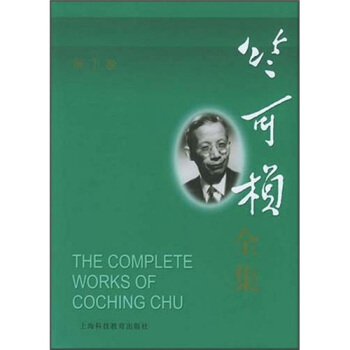



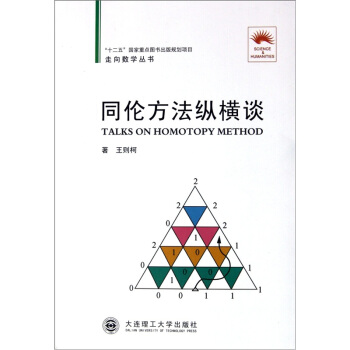


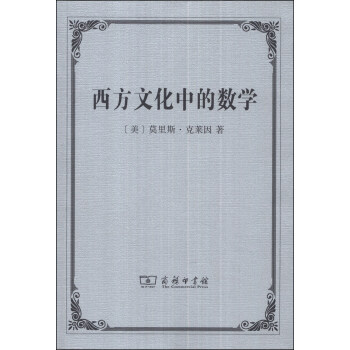


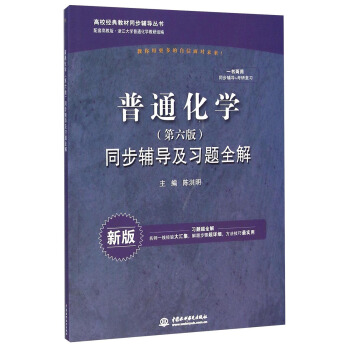
![上海三联人文经典书库71:地理学(套装上下册) [The Geography] pdf epub mobi 电子书 下载](https://pic.windowsfront.com/11671595/553f0ef0N689c38ec.jpg)




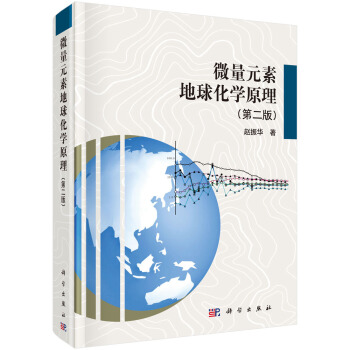
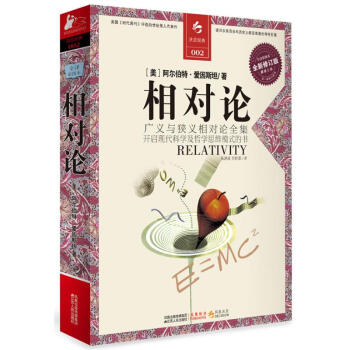

![数理逻辑(第2版) [Mathematical Logic] pdf epub mobi 电子书 下载](https://pic.windowsfront.com/10096474/f2c2dfd6-79e9-4d5d-8a47-b4bc2651d7d0.jpg)